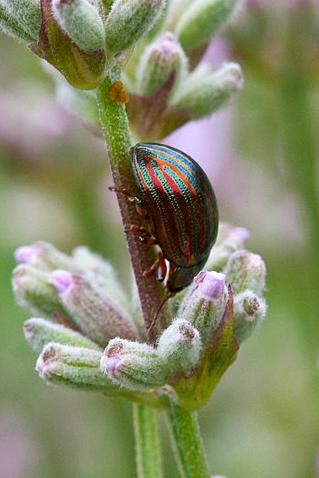Decades of RHS research charting the spread of non-native insects is now available on YouTube: a huge thank you to everyone who takes part
Gardeners' enthusiasm in reporting the presence of lily beetle and other non-native insects in gardens is amazing, so a big "thank you" is due to everyone who takes part in our surveys. The data have enabled an accurate assessment of the changing distributions of these insects and valuable datasets which can be mined for further information.
 The idea
The idea
In 2008 I had just completed a PhD on the host range and chemical ecology of the lily beetle and was looking for new projects. The UK harlequin ladybird survey which successfully uses records submitted on its website to track the spread of this non-native species caught my eye. Could the RHS do something similar for the lily beetle via its website? After all the bright red adults and excrement-covered larvae are unlikely to be mistaken for any other insect found on lilies and fritillaries.
The beetle is a non-native and the RHS had been tracking its spread since its establishment in the UK in the 1940s. Actively seeking records via the RHS website would change this record gathering from being passive (via enquiries received by RHS Gardening Advice) to active, and would involve gardeners in gathering valuable scientific information. It was also a beetle that was spreading, the beetle had remained largely confined to Surrey and a few surrounding areas until the mid 1980s, it then spread rapidly and by the early 2000s it had become widespread in England and established in Scotland and Northern Ireland. However, we could learn more about its distribution and spread with the help of gardeners.

Launch
The idea met an enthusiastic response from the RHS web team and science colleagues, it was also clear that additional species could be surveyed. Rosemary beetle (see photo), berberis sawfly and hemerocallis gall midge also met the criteria of being easily identified, non-native and with a history of RHS monitoring. The surveys were launched in May 2008, only three months after the initial idea.
An amazing response
The response was amazing - in the first month more than 300 records were received across the four surveys. In October 2008 the BBC News website ran an item on the surveys and nearly 3,000 reports by the end of the first year. The surveys have continued to operate a similar level of response over the following seven years (more than 14,500 reports submitted in total by the end of 2014). In 2015 however, more reports were received than in almost all previous years combined (nearly 14,000; 8,900 of which were lily beetle reports) largely due to mentions of the surveys on BBC Radio 4 Gardeners’ Question Time by Pippa Greenwood in spring and on BBC2 Gardeners' World in the autumn. In addition at the beginning of 2016 a fifth survey was added – the box tree moth.
So by the end of 2015 more than 17,000 lily beetle, nearly 8,000 rosemary beetle, over 2,000 berberis sawfly and nearly 1,000 hemerocallis gall midge reports had been received. Data that is shared via the National Biodiversity network (NBN) Gateway (all personal data removed). Thanks to all the participants we are able to map the changing distributions of the insects.
What next?
This is however, not the end of the story. Information collected by the surveys has become a valuable dataset documenting the range changes of five non-native insects. There is the potential to extract information from the data on rates of range expansion, possibility relating the data to changes in climate and even gardening practices. We have just begun to investigate these avenues with partners. This means that additional records are more valuable than ever so if you find lily beetle, rosemary beetle, berberis sawfly, hemerocallis gall midge or box tree moth please submit your records – and a big thank you to all those that have submitted records so far.
For more information and to submit your records, see
Follow Andy on Twitter

